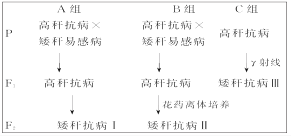阅读理解。 The tower of Big Ben, London's mo
问题:
阅读理解。
The tower of Big Ben, London's most famous building, has always leaned (倾斜) slightly, but
construction work on a new line for the London Underground seemed likely to give the tower a
real lean. Engineers have had to prop up (支撑) its base to prevent it from damaging the rest of the
Houses of Parliament.
To control the tower's movement,engineers pumped grout (水泥浆) into the soil under the tower.
The tower not leans an extra few centimeters, but the lean can only be seen by the most sharp-eyed
observer.
Between 1995 and 1997, to lengthen the Jubilee line of the Underground, builders dug a
40-metre-deep hole just 31 metres north of the clock tower. And the new tube (underground ) tunnels
were even nearer to the tower. John Burland, who recently helped stop the increasing lean in the
Leaning Tower of Pisa and was an adviser to the Jubilee line project, believed the work would affect
the tower. In his opinion,no further lean should go beyond a safety limit of 27.5 millimetres over the
existing lean of 220 millimetres.
To keep the lean within this limit,Burland told the British Association about the new method of
pumping grout immediately unde the base of the tower.More than 300 tons of grout were pumped
in during construction.The tower's additional lean went between 10 and 25 millimetres,but never
passed 27.5 millimetres.
After the construction work was completed in last 1997, a review of movements in nearby walls
showed that the building was in better shape than had been thought before and the safety limit was
raised to 35 millimetres before any action needs to be taken.
Since 1997,the tower had continued to lean, Burland told Modern Constuction.The latest
measurements,taken this year,suggest that the tower's lean had just reached 35 millimetres.But
following regular re-examinations of the tower,experts are sure that the tower has stabilised(稳定).
A spokesman for London Underground says: "We understand the tower has stabilised and retuned to
its normal movement cycle."
From Modern Construction, 16 September 2000
1. Which of the following drawings correctly shows how the propping up construction was carried out?


2. What does the word " review"(in Paragraph 5) mean?
A. Observation
B. Description
C. Discussion
D. Re-examination
3. Why was the propping up construction necessary?
A. To stop the tower of Big Ben from leaning
B. To stop sharp-eyed people from seeing the lean
C. To stop the Tower Pisa from leaning too much
D. To stop the clock tower from leaning beyond its safety limit
4. What was the existing lean of the tower at the time when the article was written?
A. 220 millimetres
B. 255 millimetres
C. 35 millimetres
D. 27.5 millimetres
5. We can infer from the article that _____.
A. the tower of Big Ben will damage the Houses of Parliament
B. the Jubilee line should be stopped in Burland's opinion
C. the writer is blaming Burland for making a mistake
D. the propping up work has proved to be successful
